The Vietnam Museum of Weapon has a three-storey building for showrooms, each floor covering 1,000m2. Here visitors can see hundreds of exhibits of more than 5,000 original items. They are displayed in groups with descriptions, each having historical value and are proof of the establishment and development of Vietnamese weapon technology.
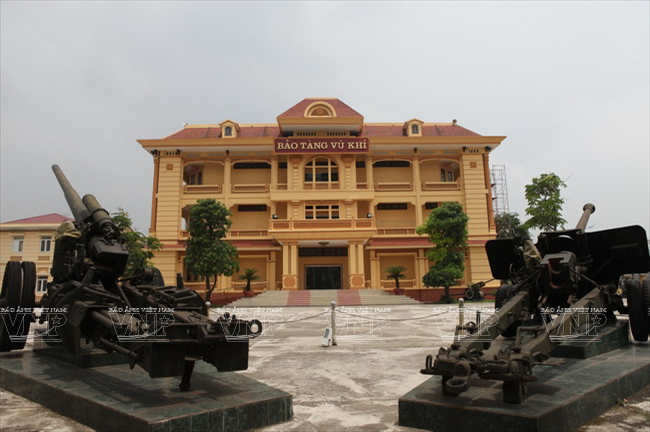 The Vietnam Museum of Weapons. Photo: Tran Thanh Giang/VNP 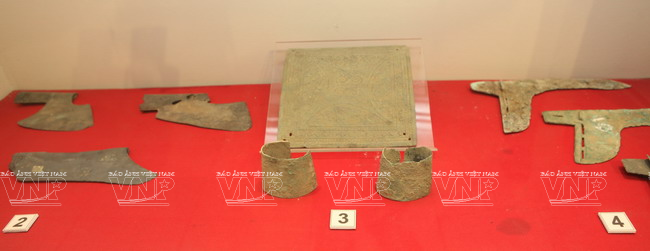 Weapons of the Dong Son period. Photo: Tran Thanh Giang/VNP  Heads of spears and harpoons from the 1st to 10th centuries. Photo: Tran Thanh Giang/VNP  Cannons in the painting reproducing the Victory of Ngoc Hoi – Dong Da. Photo: Tran Thanh Giang/VNP  Wooden stakes used in the battle to fight against the Nam Han (Nanhan) on the Bach Dang River. Photo: Tran Thanh Giang/VNP |
The modern weapons were made by the Vietnamese army during the two wars against the French colonialists (1945-1954) and the US imperialists (1954-1975).
Through the valuable exhibits, visitors can learn more about the development of Vietnam’s weapon making industry. For example, in the time of the Hung kings, the Viet people used crossbows and copper arrows. In the Tran Dynasty (1225-1400), the army was equipped with bows and arrows, shields, stone throwers and flammable fireworks. The armies of the Ly Dynasty (1010-1225) and the Tran Dynasty (1225-1400) paid special attention to developing the army through training and equipping them with weapons. In 1405, the Ho Dynasty successfully cast copper and iron cannons. In the Nguyen Dynasty (1802-1945), the skilled workers’ guild and foreman’s service were established. Weapon making workshops were located in the imperial city of Hue and other localities. For the infantry, the Nguyen Dynasty manufactured copper muskets, flame-throwers, and iron cannons. The insurrectionists recruited molders and blacksmiths, and established weapon making workshops to make hundreds of rifles which were the same as those they had seized from the French troops.
It can be said that the Vietnam Museum of Weapons is an epic with objects. Looking at the full collection of the exhibits, visitors can learn about the Vietnamese people’s history of fighting for the nation through the years. The scimitars and falchions marked the fight of the worker and farmer soldiers in the years before the August Revolution in 1945. The cartridges, muskets and pistols were used by the first 34 members of the Vietnam Propaganda Liberation League founded on December 22, 1944, the forerunner of the present-day Vietnam People’s Army. The landmines, tripod bombs and self-made bazookas were used by the soldiers and guerrillas in the first days of the resistance war against the French colonialists in 1946.
 The statue of a soldier holding a tripod bomb to protect the capital. Photo: Tran Thanh Giang/VNP  Reproducing the images of soldiers preparing weapons in the tunnel. Photo: Tran Thanh Giang/VNP 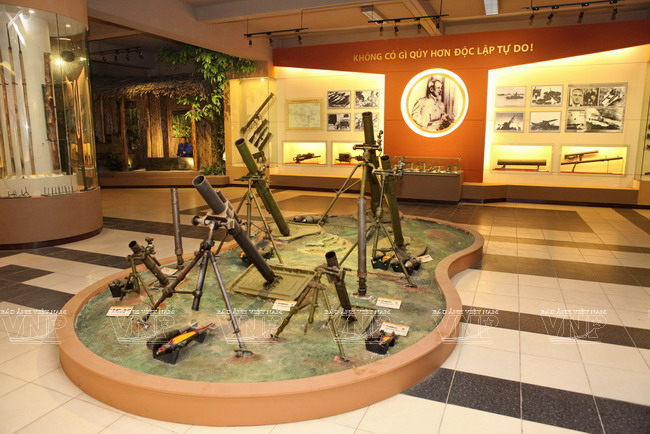 The room for displaying weapons which the Vietnamese soldiers and people used to fight against the US. Photo: Tran Thanh Giang/VNP 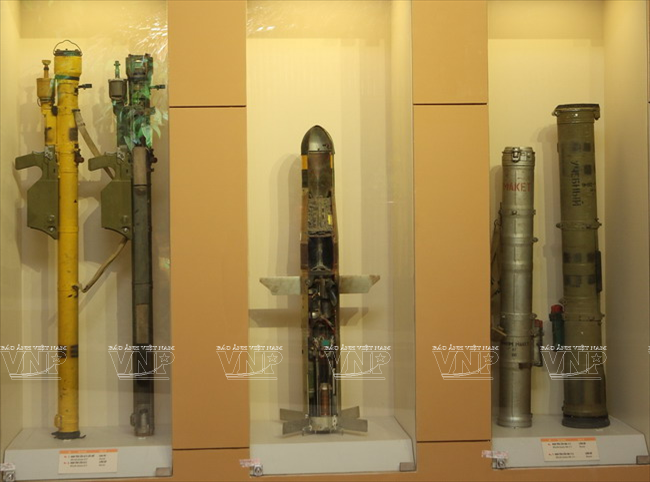 Rockets. Photo: Tran Thanh Giang/VNP  Fuses. Photo: Tran Thanh Giang/VNP.  Submachine guns which the Vietnamese soldiers and people use in the wars to fight against the enemies to protect the nation. Photo: Tran Thanh Giang/VNP 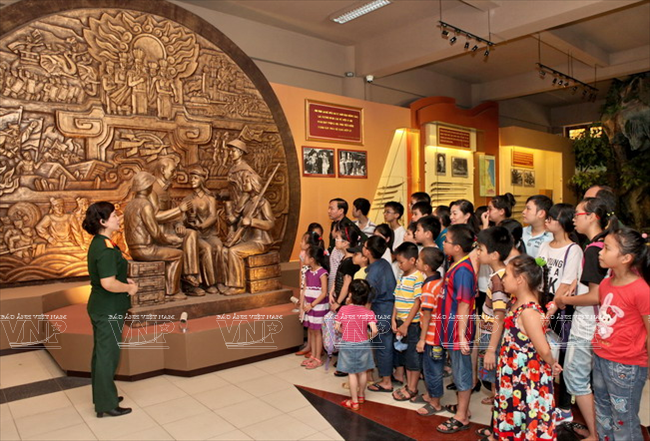 Pupils learn about the history of the struggles against the enemies for national protection. Photo: Tran Thanh Giang/VNP |
Apart from displaying domestically-made weapons, the museum also showcased those from the former Soviet Union to support the Vietnamese army, such as the AK47 rifle, the RP6-7 anti-tank gun, the T54 tank, the multi-functional helicopters MI-8, MI-24 and AN-2, the MG-21 interceptor, the BM21 automatic reactive cannon system with a launching pad for forty 122mm-barrels, and the SAM-2 anti-aircraft missile.
Although open for public visit only recently, the museum is expected to be an attractive destination for visitors who want to learn more about the weapons used by the Vietnamese.



